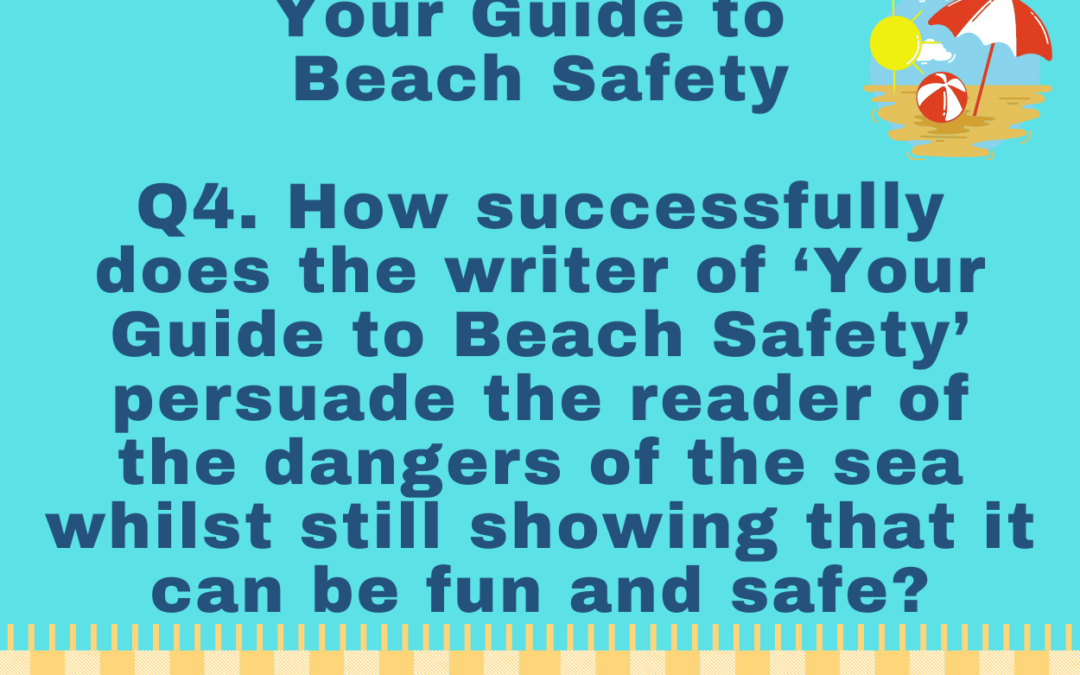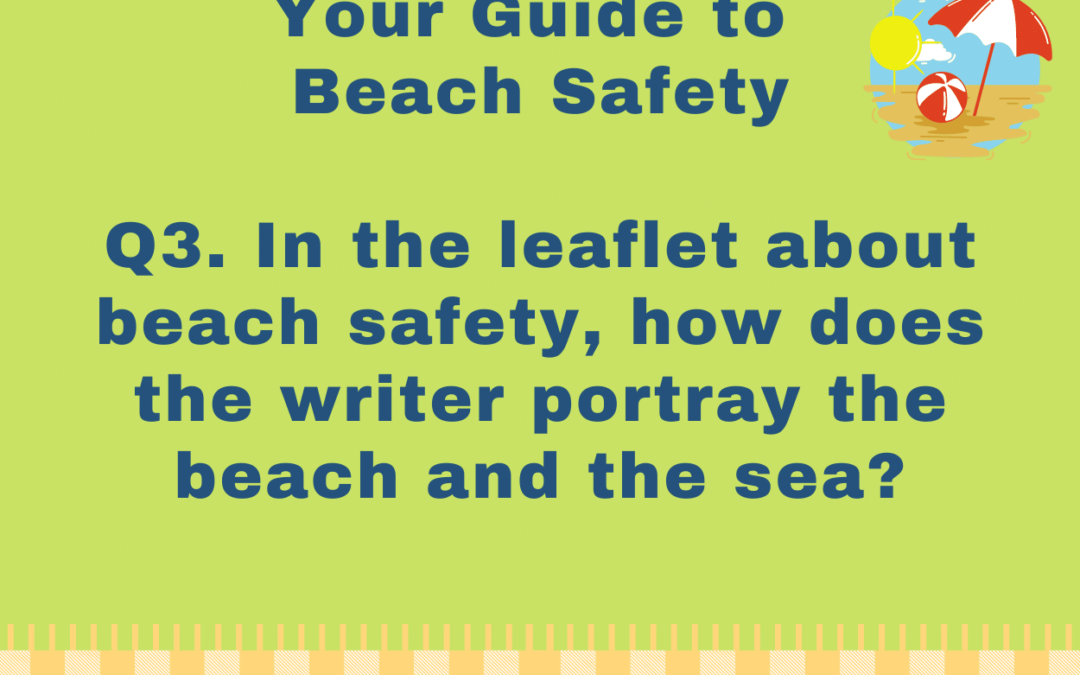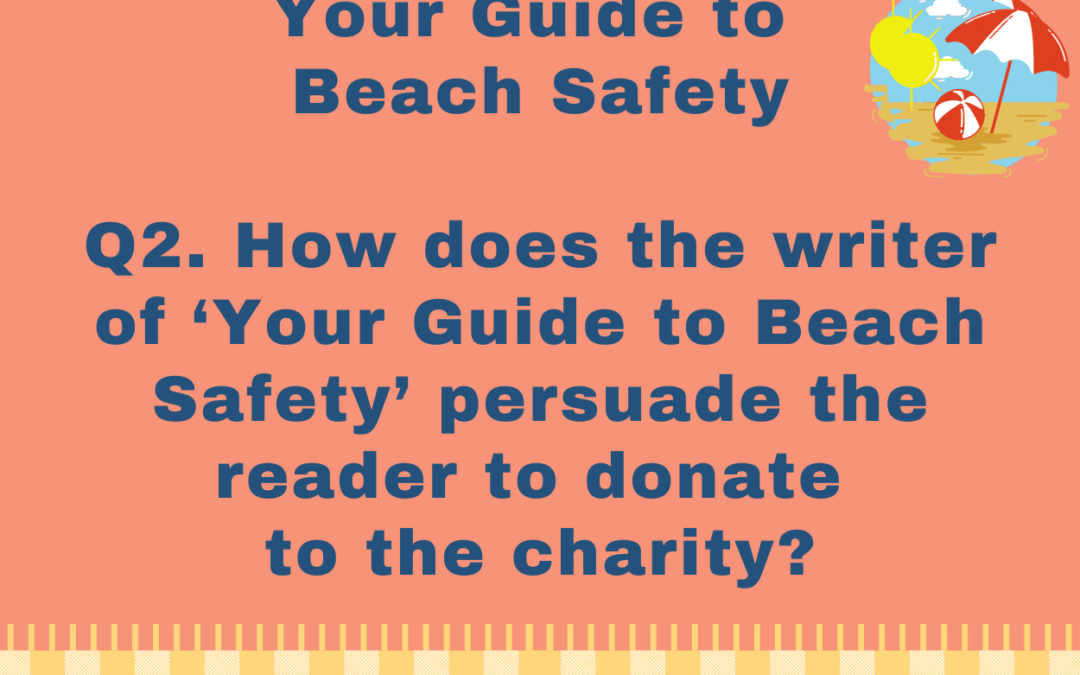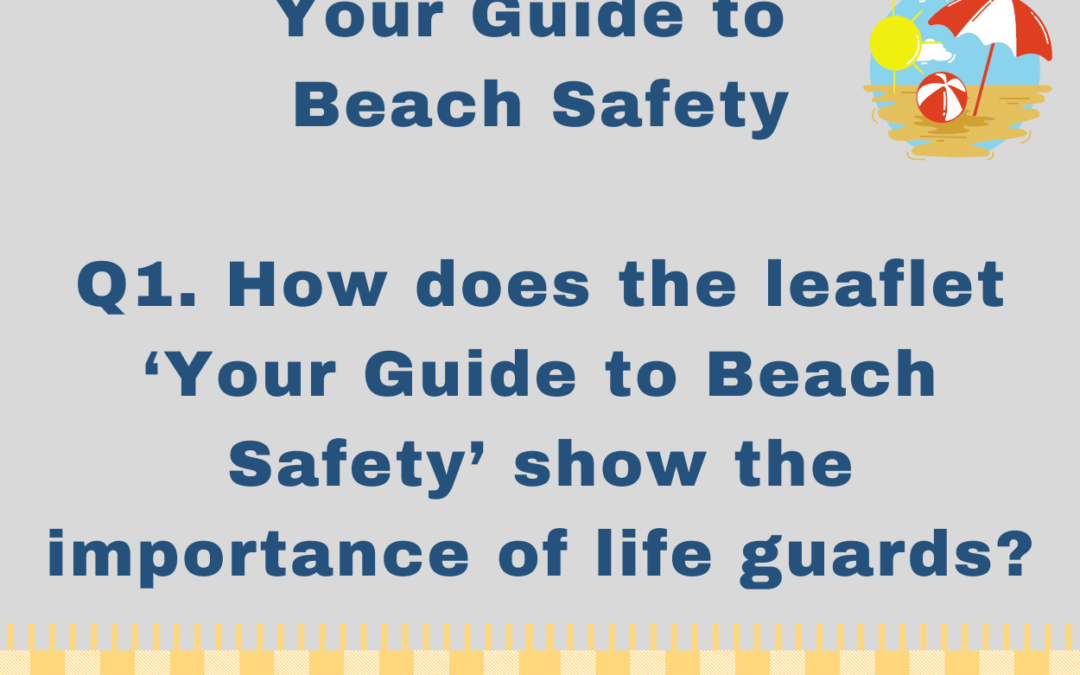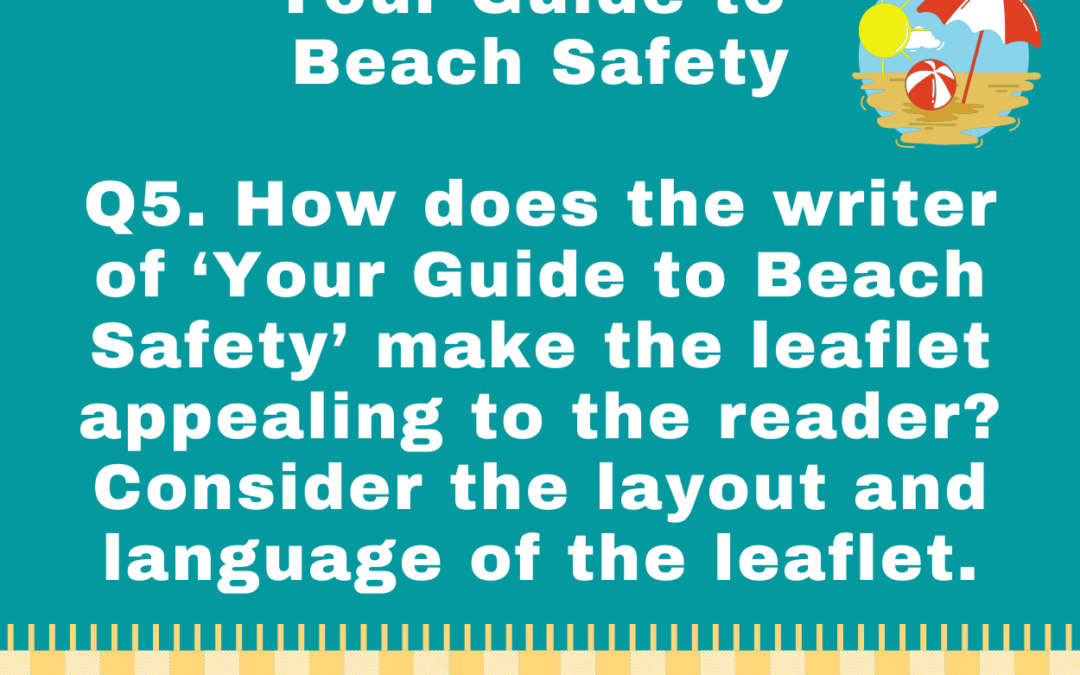
IGCSE Your Guide to Beach Safety by V Denman Model Essays Question 05
Edexcel English IGCSE: Your Guide to Beach Safety by V Denman
Q5. How does the writer of ‘Your Guide to Beach Safety’ make the leaflet appealing to the reader? Consider the layout and language of the leaflet.
You should refer closely to the leaflet to support your answer. You may use brief quotations.
Edexcel English IGCSE Model Essay by an Expert
Although this leaflet delivers serious warnings about the dangers of the sea, it is important that it is appealing to read, so that people will pick up the leaflet and take its warnings seriously.
The leaflet’s layout makes it easy to read, meaning that people are more likely to take in the information contained in the leaflet. The headings are very large, which draws the reader’s attention and allows them to go straight to sections they feel are relevant to them. Bright primary colours make the leaflet attractive and cheerful. However, these colours have the dual meaning of danger. The use of these colours make people likely to pick up the leaflet and read it: it is bright, so will stand out amongst other leaflets, and also has the appearance of something giving important warnings.
Advice and instructions to the reader are presented in an attractive way, to make the reader more likely to read and follow them. The use of bullet points makes the information easy and quick to read. People rarely read every word of a leaflet, so it is important that information is portrayed briefly and clearly. Furthermore, the bullet points are in the shape of stars, which makes the information look attractive. This also creates a lighter tone than the content of the leaflet would suggest; using stars to provide life-saving instructions avoids a ‘preachy’ and over-serious tone. The diagrams of the man caught in a rip are askew, and have the appearance of having been pasted onto the leaflet. This makes it look informal and fun, preventing the tone becoming too instructive and grave.
Another way in which the leaflet appeals to the reader is through emotional engagement with the content. This occurs mainly in the “True Story”, in which a mother recounts an experience in which her sons nearly drowned. The use of emotional vocabulary such as “terrifying” and “relieved” appeals to the reader’s sympathy and encourages them to consider how they would react in such circumstances. The writer creates tension and drama, for example in the alliteration used to describe the boys’ reaction: they were “shaking with shock”. The story has a happy ending, in which the boys are rescued. This is probably because this leaflet could be attractive for children, and it would be inappropriate to narrate a story with a tragic ending. The story also serves as a creative way in which to portray the life-saving activities of lifeguards. It ends with a poignant and reflective tone, created with the use of the conditional: “my boys would have drowned.” The first person possessive pronoun here reminds the reader of the terrible personal impact that such an outcome would have had.
This leaflet, despite containing life-saving content, is appealing to the reader. Its appearance makes people likely to pick up and read it, and the engagement with the reader’s emotions makes them more likely to follow its important instructions.



